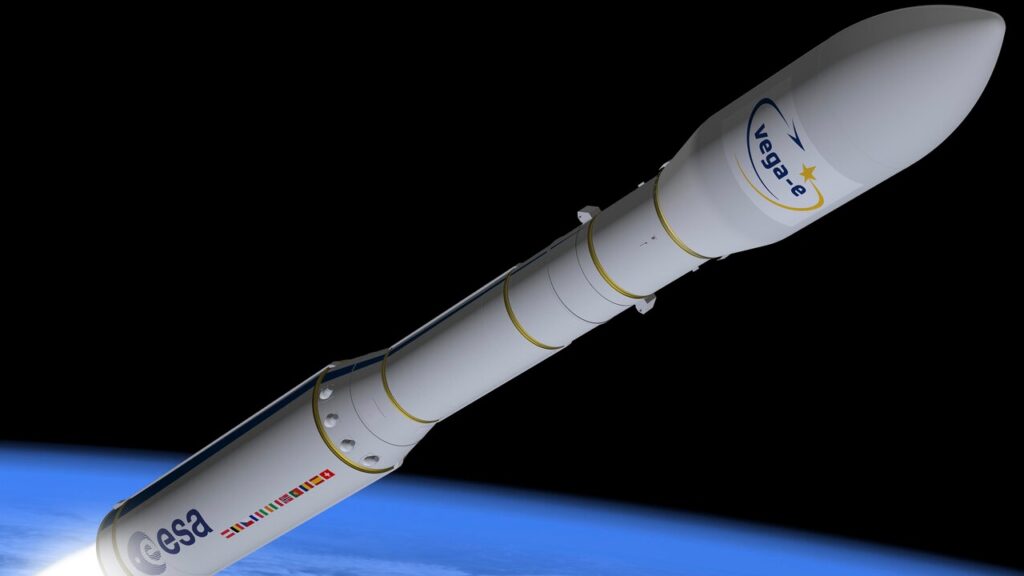Italy is on the edge with the new ESA Vega-E launch system, thanks to Avio. The new carrier will have superior performance and better sustainability thanks to the use of liquid propellant.
Vega-E will be used to launch light satellites in multiple orbits with a single launch but will use part of the previous Vega-C components. The first launch, scheduled for 2022, will increase the cargo volume while reducing the cost per kilo for the market.
The new upper stage is completely new and features a new low-cost liquid fuel engine. It is an M10 cryogenic liquid oxygen-methane thruster. The new rocket will consist of 3 stages, one less than the Vega-C. The P120C solid rocket engine is responsible for the take-off thrust and the Zefiro-40 solid rocket engine is for the second stage. The new one, the heart of the Vega-E, takes the place of the Zephyr-9 and the upper AVUM currently used.
The goal is to improve mission flexibility thanks to the multiple restart system. The M10 features a full-size 3D printed thrust chamber. The new system has passed various hot firing tests.
Industries and universities from different countries have been involved in this project, but Avio gives a decisive contribution. The leading company in space propulsion based in Colleferro announced 118.8 million contracts which ensure the advancement of the Vega launcher program beyond 2025 and confirms the role of the Italian space industry for the competitive development of the European space system.
Propulsion is one of the strategic keys for the space economy of the future. Once the satellites have been launched into orbit, it is essential to reduce the maneuver times to reach, for example, the operational altitude. MIPRONS is investing in the research of a new propulsion system based on an electrolysis process that extracts oxygen and hydrogen directly from a water tank.

